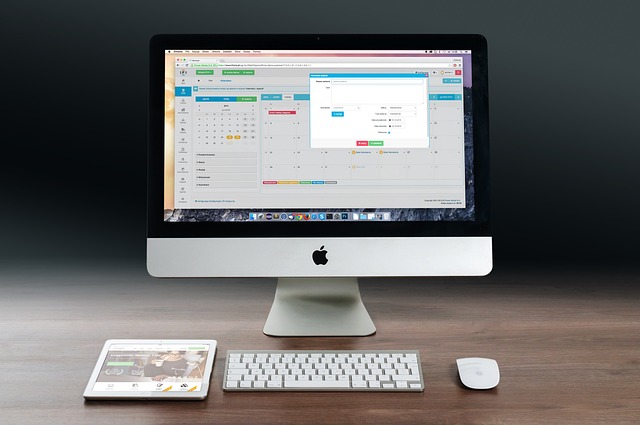Best Note-Taking Apps for Students & Professionals

In today’s fast-paced world, note-taking has become an essential skill for both students and professionals. Whether you’re attending lectures, brainstorming ideas, or managing projects, having a reliable tool to capture your thoughts can significantly enhance productivity and organization. With the rise of technology, there are numerous note-taking apps available that cater to different needs and preferences. In this article, we will explore some of the best note-taking apps designed specifically for students and professionals, highlighting their features, benefits, and how they can help streamline your workflow.
1. Introduction to Note-Taking Apps
Note-taking apps have revolutionized the way people organize information. Unlike traditional pen-and-paper methods, these digital tools offer advanced functionalities such as voice recording, multimedia integration, cloud synchronization, and collaboration capabilities. They allow users to access their notes from anywhere, ensuring that important information is always within reach.
For students, effective note-taking is crucial for academic success. It helps them retain information better, prepare for exams, and stay organized throughout the semester. Similarly, professionals rely on note-taking apps to manage tasks, track progress, and collaborate with team members. The right app can make all the difference in improving efficiency and reducing stress.
2. Top Note-Taking Apps
Here’s a detailed look at some of the most popular note-taking apps:
Evernote
Overview:
Evernote is one of the most well-known note-taking apps globally. It offers a wide range of features that make it suitable for both personal and professional use.
Features:
- Cross-Platform Syncing: Access your notes across devices (desktop, mobile, tablet).
- Voice Recording: Capture audio notes during meetings or lectures.
- Web Clipper: Save web pages directly into your notebooks.
- Searchable PDFs and Images: Easily find text within scanned documents or images.
- Collaboration Tools: Share notebooks with colleagues or classmates.
Pros:
- Robust feature set.
- Excellent search functionality.
- Supports multiple file formats.
Cons:
- Free version has limited storage and features.
- Can feel overwhelming for beginners due to its complexity.
Best For: Students who need comprehensive organizational tools and professionals requiring robust collaboration options.
Notion
Overview:
Notion is more than just a note-taking app; it’s an all-in-one workspace where you can write notes, create databases, plan projects, and much more.
Features:
- Modular Interface: Customize your workspace by combining blocks like text, tables, calendars, and kanban boards.
- Templates: Use pre-made templates for various purposes, including study guides, project plans, and meeting agendas.
- Real-Time Collaboration: Work together with others in real time.
- Database Integration: Create custom databases to store and organize data efficiently.
Pros:
- Highly versatile and customizable.
- Great for organizing complex workflows.
- Free tier offers ample functionality.
Cons:
- Steeper learning curve compared to simpler apps.
- Some advanced features require a paid subscription.
Best For: Professionals looking for a centralized platform for work management and students needing flexibility in organizing their studies.
OneNote
Overview:
Developed by Microsoft, OneNote is part of the Office suite and provides a user-friendly interface for taking and organizing notes.
Features:
- Digital Notebooks: Organize notes into sections and pages.
- Handwriting Support: Write notes using a stylus or touchscreen.
- Tagging System: Highlight key points with tags for easy reference.
- Integration with Other Microsoft Apps: Seamlessly connect with Word, Excel, and PowerPoint.
Pros:
- Easy to use.
- Strong integration with Microsoft ecosystem.
- Free version includes most useful features.
Cons:
- Limited cross-platform support compared to competitors.
- Lacks some advanced features found in other premium apps.
Best For: Users already invested in the Microsoft ecosystem and those seeking simplicity without sacrificing functionality.
Google Keep
Overview:
Google Keep is a lightweight yet powerful note-taking app developed by Google. Its minimalist design makes it perfect for quick jotting down ideas.
Features:
- Color-Coded Notes: Categorize notes visually with colors.
- Checklists: Create to-do lists for better task management.
- Voice-to-Text Conversion: Dictate notes instead of typing.
- Integration with Google Drive: Attach files and save notes to your Google Drive account.
Pros:
- Simple and intuitive interface.
- Free and no ads.
- Excellent integration with other Google services.
Cons:
- Limited customization options.
- Fewer collaborative features compared to alternatives.
Best For: Individuals seeking a straightforward solution for basic note-taking and task management.
Zoho Notebook
Overview:
Zoho Notebook is another excellent option for note-taking, offering a clean interface and robust feature set.
Features:
- Rich Text Editing: Format text with bold, italic, bullet points, etc.
- Attachment Support: Add photos, videos, and documents to your notes.
- Labels and Categories: Organize notes effectively using labels and folders.
- Offline Access: View and edit notes even without an internet connection.
Pros:
- Free version offers generous storage space.
- Secure encryption ensures privacy.
- Good balance between simplicity and functionality.
Cons:
- Less known brand may deter some users.
- Some premium features require subscription.
Best For: Budget-conscious individuals looking for a reliable alternative to mainstream apps.
Simplenote
Overview:
As the name suggests, Simplenote focuses on simplicity, making it ideal for users who prefer minimalistic designs.
Features:
- Markdown Support: Format text using markdown syntax.
- Instant Sync: Automatically sync notes across devices.
- Search Functionality: Quickly locate any note with powerful search tools.
Pros:
- Extremely fast and lightweight.
- Open-source software with active community support.
- Perfect for writers and bloggers.
Cons:
- Lacks advanced features like collaboration and multimedia embedding.
- Basic design might not appeal to everyone.
Best For: Writers, freelancers, and anyone who values speed and simplicity.
Apple Notes
Overview:
Apple Notes is a built-in app for iOS and macOS users, providing seamless integration across Apple devices.
Features:
- Drawing Tool: Sketch diagrams or illustrations directly in your notes.
- Password Protection: Secure sensitive notes with passcodes.
- Shared Albums: Collaborate with others by sharing albums of notes.
Pros:
- Free and included with Apple devices.
- Excellent iCloud syncing.
- Regular updates adding new features.
Cons:
- Only available on Apple devices.
- Limited third-party integrations.
Best For: Apple enthusiasts who want a native solution for their ecosystem.
3. Key Features to Look For in a Note-Taking App
When choosing a note-taking app, consider the following factors:
- Ease of Use: How intuitive is the interface? Will it take too long to learn?
- Syncing Capabilities: Does the app support cross-device syncing via cloud services?
- Collaboration Options: Can you share notes and collaborate with others?
- Storage Limits: Is there enough free storage for your needs, or do you need to upgrade?
- Customization: Can you personalize the app to suit your workflow?
4. Tips for Effective Note-Taking
To maximize the benefits of your chosen note-taking app, follow these tips:
- Organize Your Notes: Use folders, tags, or categories to keep everything structured.
- Use Templates: Save time by reusing templates for recurring tasks or assignments.
- Regularly Review Notes: Set aside time each week to review and update your notes.
- Leverage Multimedia: Incorporate images, videos, and audio recordings when appropriate.
- Backup Important Data: Ensure your notes are backed up regularly to avoid accidental loss.




